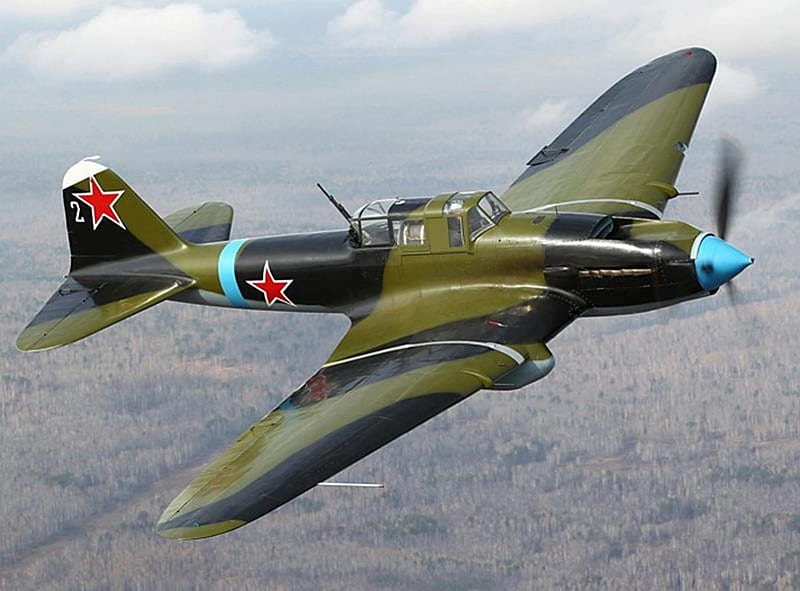
In a lighthearted and somewhat satirical exploration of the Second World War’s aircraft, Vice magazine’s Bruno Bayley humorously dissects the connections between different nations and the planes they produced during the conflict. Through his cheeky commentary, Bayley captures the essence of each country’s approach, reflecting their national attitudes and circumstances.
USSR – Ilyushin Il-2: The Soviet Sledgehammer
Bayley kicks off with the USSR’s Ilyushin Il-2, painting a picture of an aircraft as sturdy and relentless as the Soviet regime itself. This rugged ground attack weapon, heavily armored for the pilot’s safety while leaving the rear gunner more vulnerable, mirrors the “do-or-die” mentality of the Eastern Front. The Il-2, despite its heavy losses, made its mark with its impact on battles like Kursk, embodying the determination of Stalin’s Russia.

BRITAIN – Hawker Hurricane: The Plucky Underdog

Moving on to Britain, Bayley introduces the Hawker Hurricane, often overshadowed by the Spitfire but responsible for the majority of RAF kills during the Battle of Britain. The Hurricane’s blend of old and new construction techniques symbolizes Britain’s resilience, resourcefulness, and the famous “stiff upper lip.” It was a workhorse that spoke to the nation’s ingenuity and its ability to persevere despite being outdated in design.

GERMANY – Messerschmitt Me 262: Lost Potential

The Messerschmitt Me 262 takes center stage as a testament to both Germany’s technological prowess and its leadership’s inability to harness it effectively. The Me 262, the world’s first operational jet fighter, suffered from political meddling and misguided priorities. Bayley highlights how Germany’s missed opportunities and insistence on retrofitting older models reflected a system plagued by unrealistic optimism and a refusal to adapt to changing circumstances.


ITALY – Macchi C.202 Folgore: The Beauty That Fell Short

Bayley’s humorous take on Italy’s Macchi C.202 Folgore portrays a stunning yet under-armed aircraft, embodying the stereotype of Italian style without substance. While the Folgore’s innovative design and unique features set it apart, Italy’s air industry’s focus on heavy-duty radial engines hindered its impact. The Folgore’s “irrelevant ghost” status captures Italy’s struggles and inability to fully capitalize on its potential.

USA – Republic P-47 Thunderbolt: Power and Resilience

Finally, Bayley turns to the USA’s Republic P-47 Thunderbolt, an epitome of American engineering and might. He highlights the P-47’s massive size, heavy armor, and ability to take punishment, aligning it with America’s resource-rich and powerful position. While the P-47’s design might not have been the sleekest, its durability and combat effectiveness showcase the nation’s formidable industrial capabilities.

Bayley’s witty analysis serves as a lighthearted reminder that history can often be examined through a playful lens, revealing the unique personalities of nations through the aircraft they produced during one of the world’s most significant conflicts.





